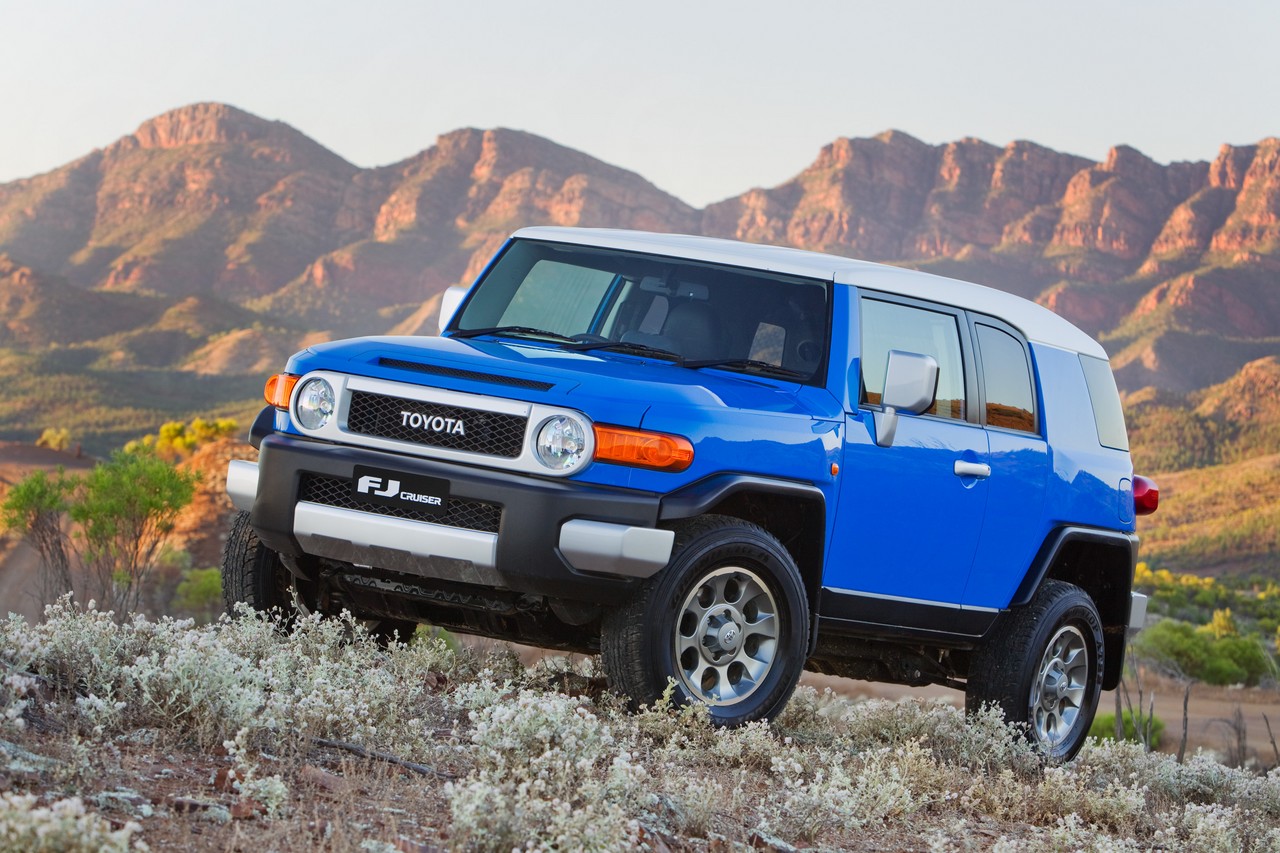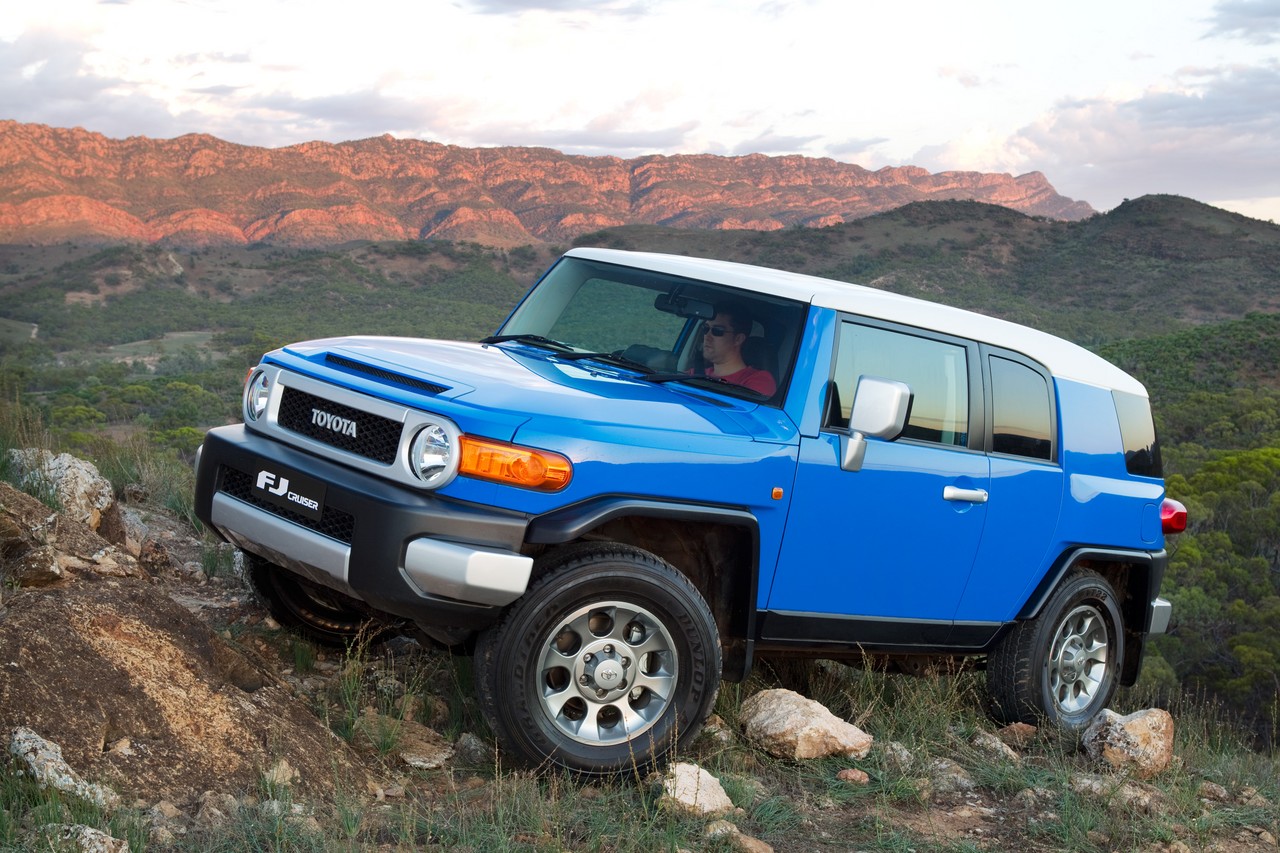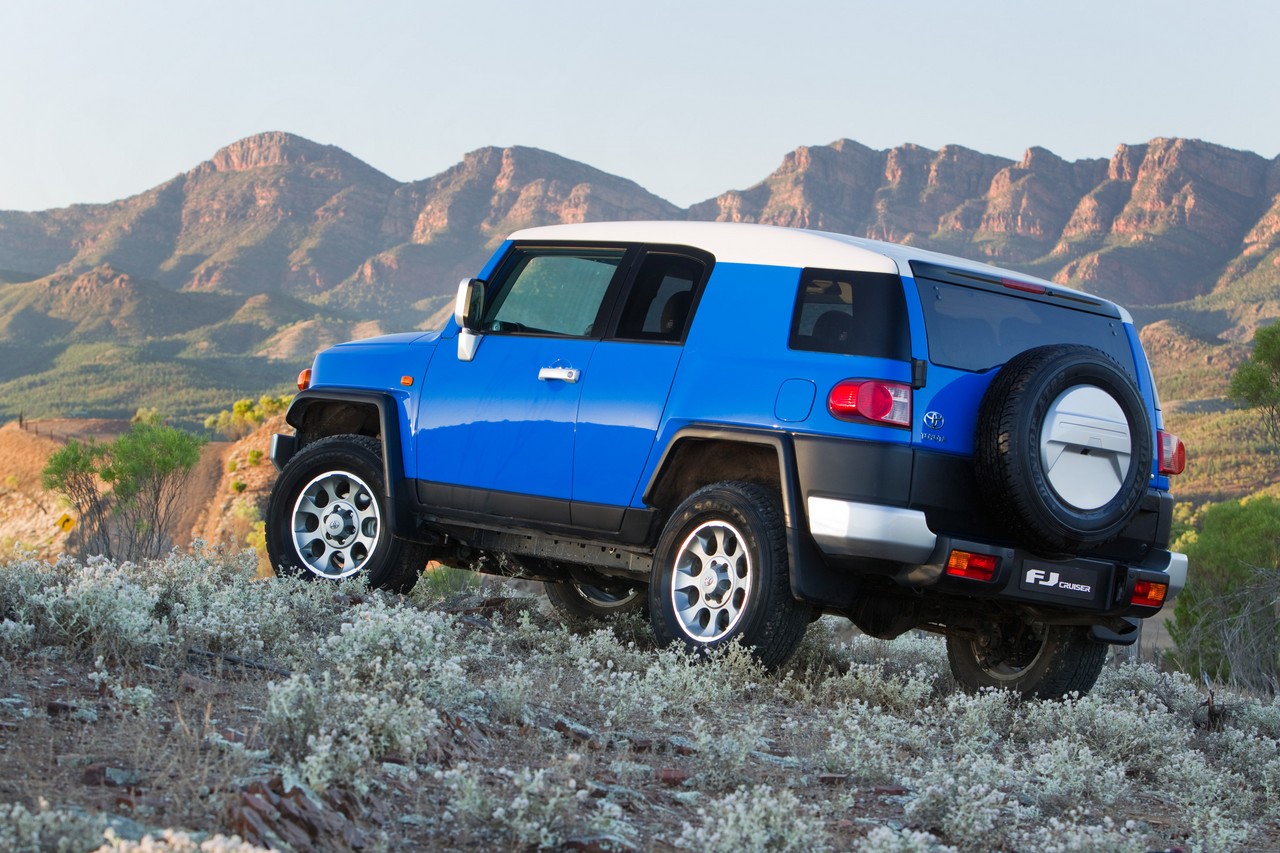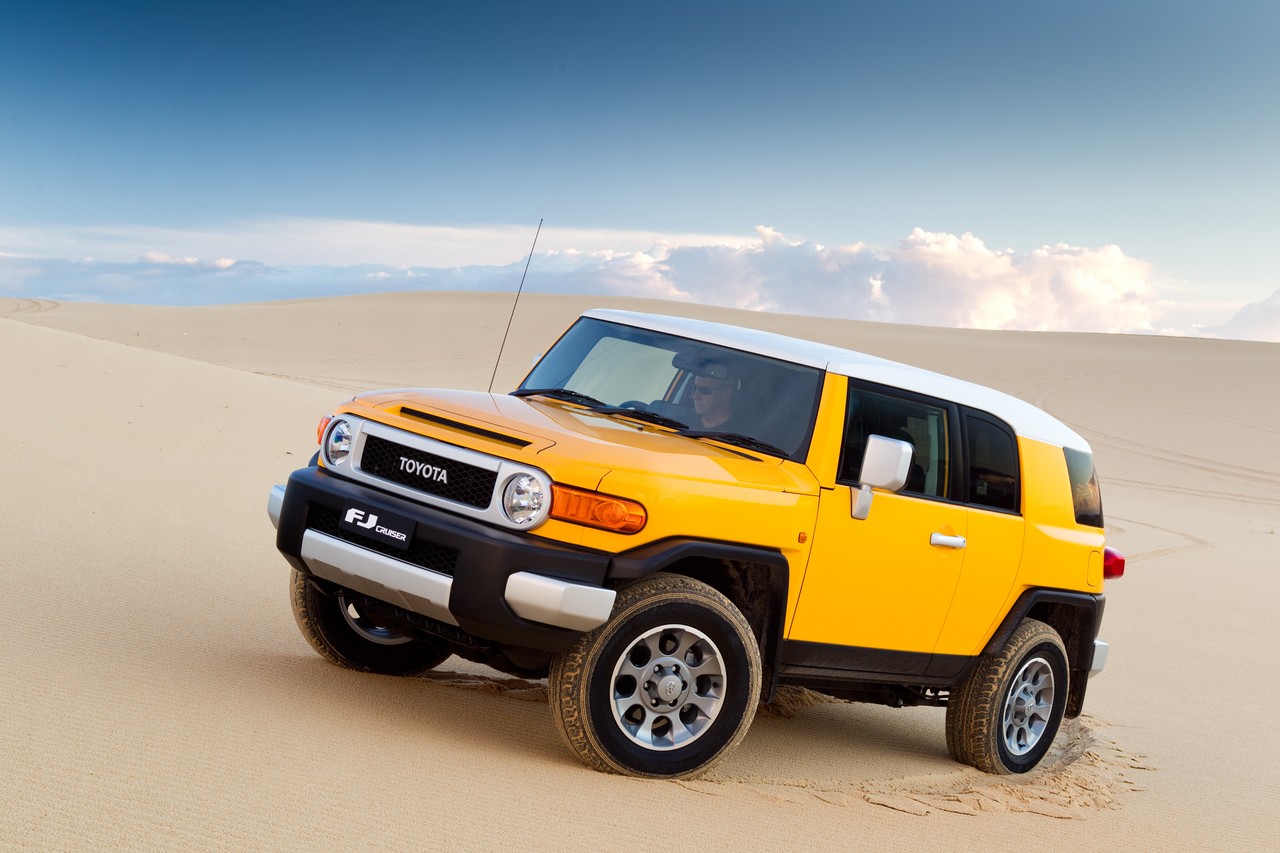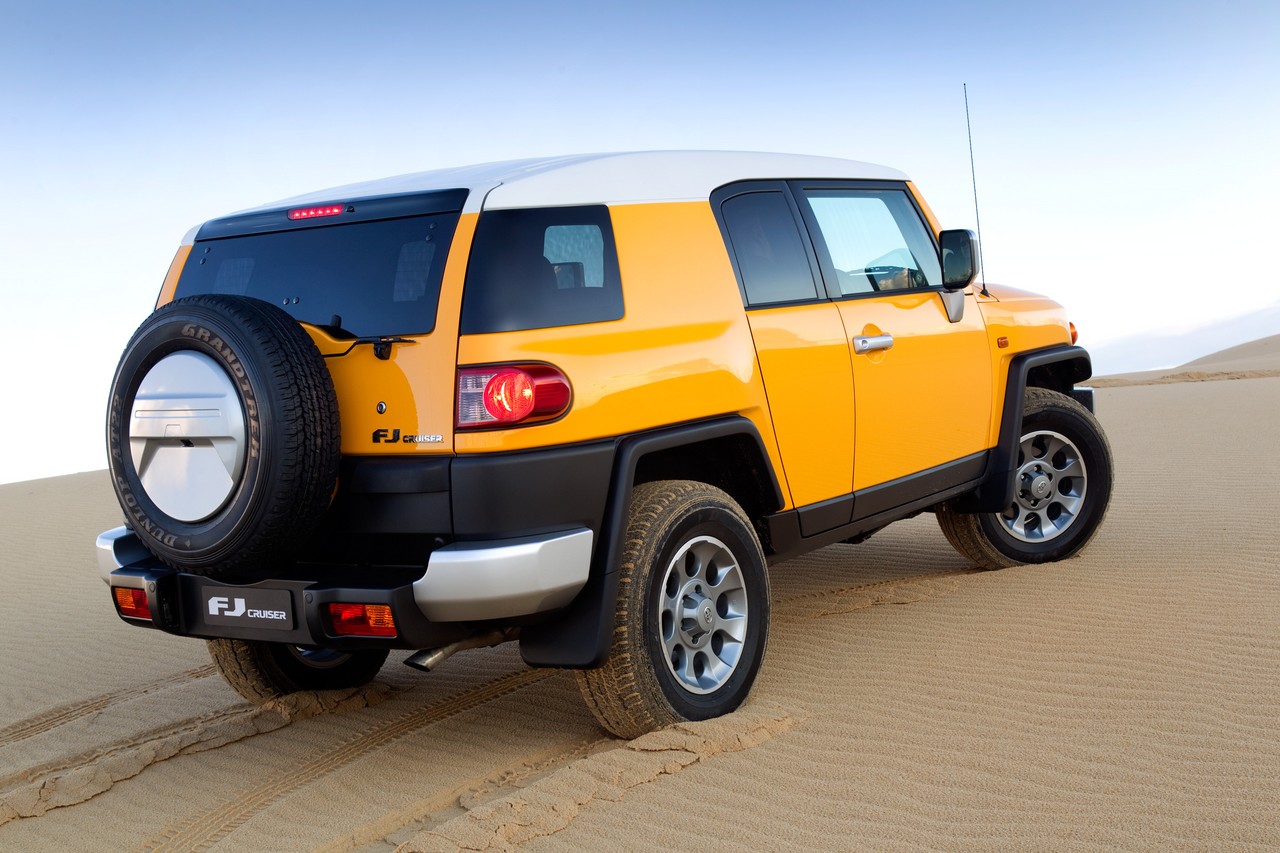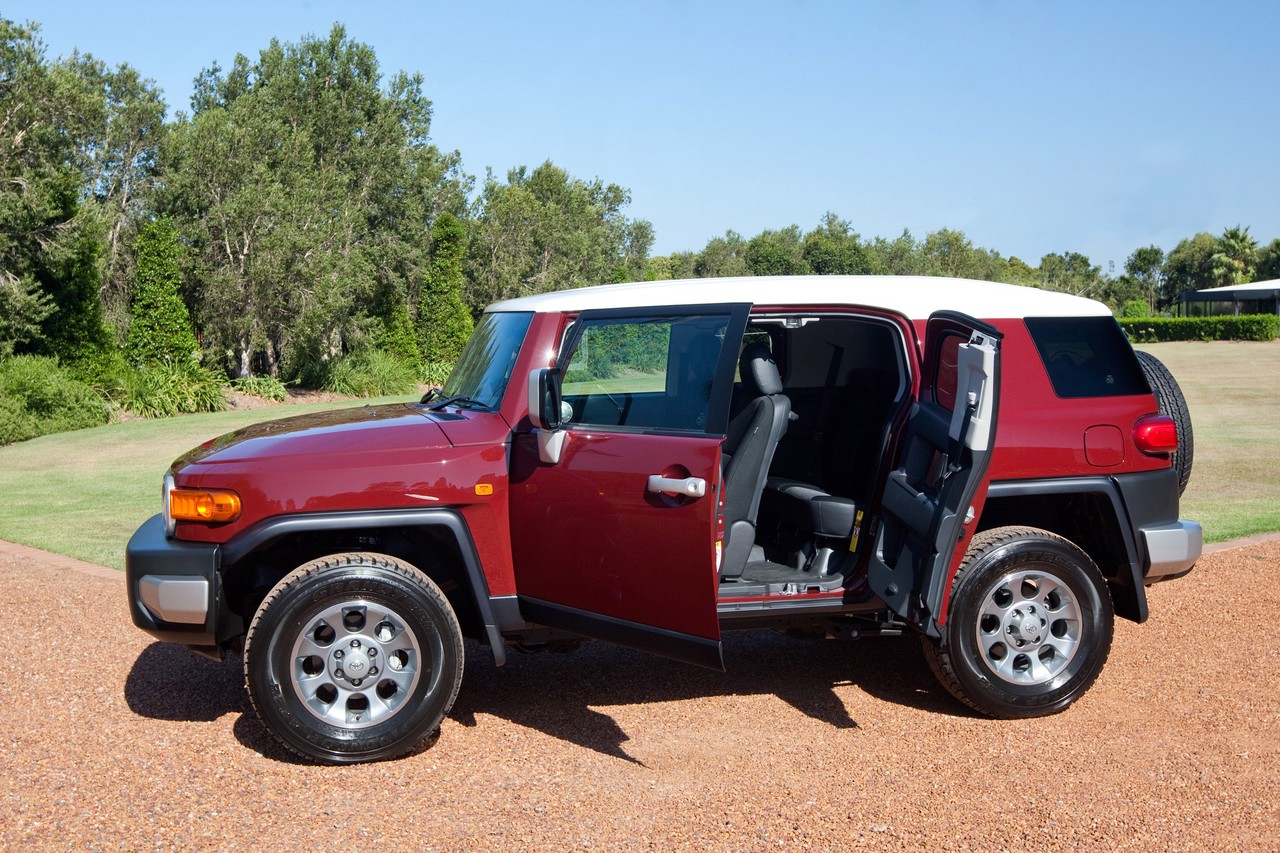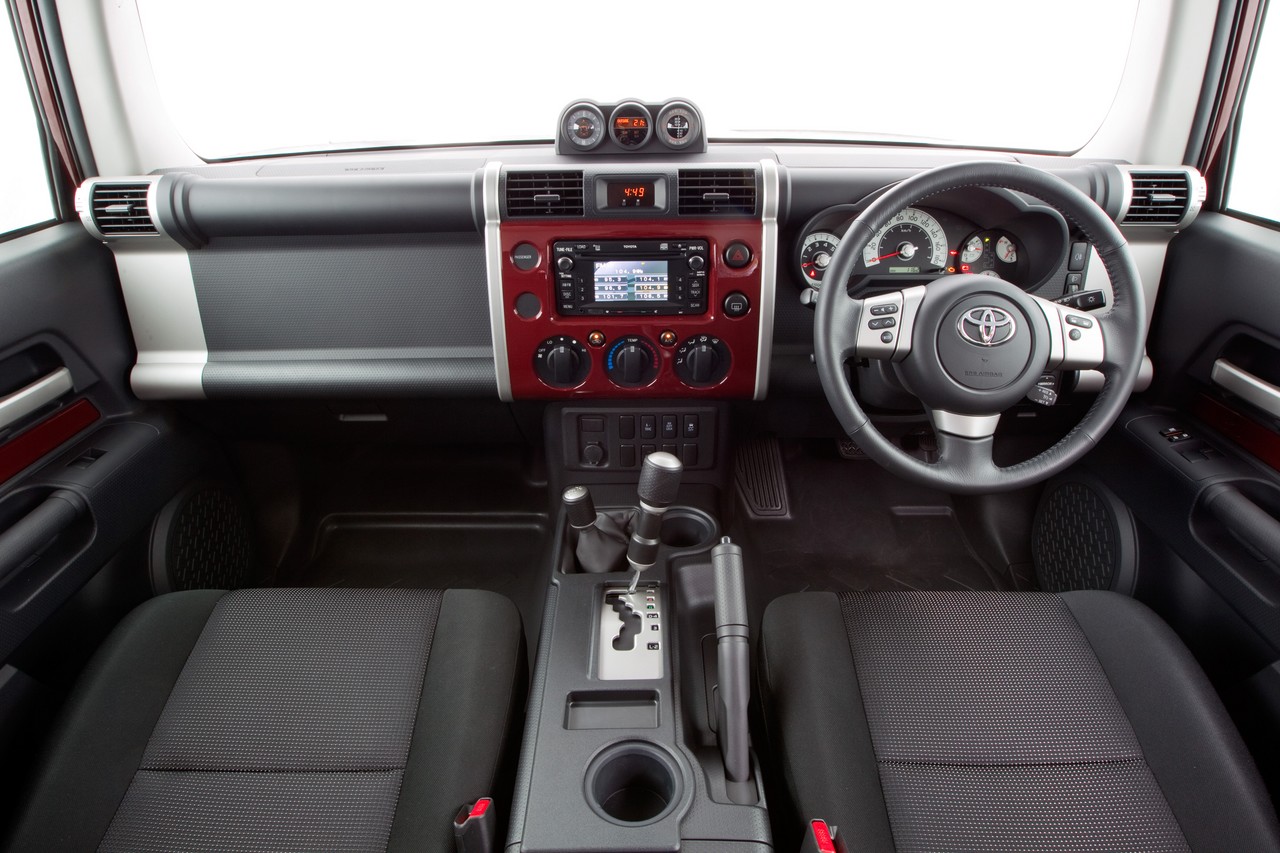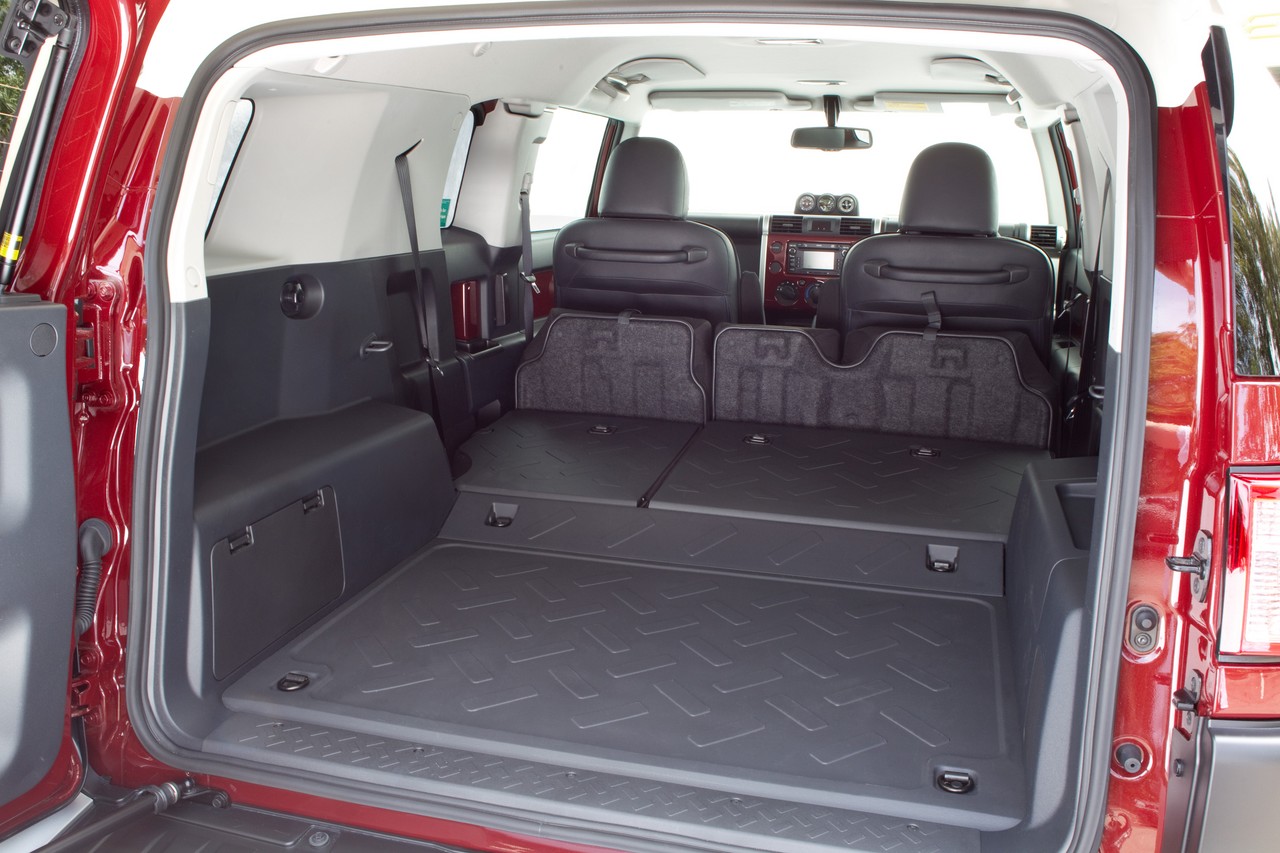
- Responsive 4.0-litre 1GR-FE V6 petrol engine
- Compliant suspension
- Off-road capability
- Good forward visibility…
- … but poor rear visibility
- Flat front seats lack support
- Steering rack rattle over uneven surfaces
- Basic interior design and harsh plastics
- Rear doors can only open with the front doors
- Awful aerodynamics (0.40 Cd)
Overview
Released in March 2011, the Toyota FJ Cruiser was a five-seat SUV with rearward opening back doors. Manufactured in Japan by Hino Motors, the FJ Cruiser was powered by a 4.0-litre V6 petrol engine that was mated to a five-speed automatic transmission. Furthermore, the FJ Cruiser’s part-time four-wheel drive system utilised a two speed transfer case and an electronic rear differential lock.
1GR-FE V6 engine
The 4.0-litre 1GR-FE V6 petrol engine had an aluminium alloy block and cylinder head, electronic fuel injection, double overhead camshafts per cylinder bank (chain-driven), four valves per cylinder, variable intake and exhaust valve timing (Toyota’s ‘Dual VVT-i’), and a compression ratio of 10.4:1. Although Toyota recommended 95 RON unleaded petrol, the FJ Cruiser could operate on 91 RON petrol.
The 1GR-FE engine was mated to the five-speed A750F automatic transmission.
Body and dimensions
Although its styling cues were inspired by the FJ40 Land Cruiser, the FJ Cruiser shared some of its underpinnings with the 120-Series Landcruiser Prado . Compared to the 120-Series Landcruiser Prado, the FJ Cruiser was 180 mm shorter (at 4670 mm), 30 mm wider (1905 mm), 35 mm lower (1830 mm) and had a 100 mm shorter wheelbase (2690 mm).
Suspension and steering
The FJ Cruiser had double wishbone front suspension with coil springs, gas-filled dampers and a stabiliser bar. Furthermore, the live rear axle had five links, coil springs, gas-filled dampers and a stabiliser bar.
The FJ Cruiser had variable ratio, rack-and-pinion power-assisted steering.
| Engine | Trans. | Peak power | Peak torque | |
|---|---|---|---|---|
| FJ Cruiser | 4.0-litre petrol V6 (1GR-FE) | 5sp auto | 200 kW at 5600 rpm | 380 Nm at 4400 rpm |
Safety equipment
Standard safety equipment for the FJ Cruiser included dual front airbags, front side airbags, full-length curtain airbags (i.e. for front and rear occupants), ABS, electronic brake force distribution, brake assist, electronic stability control, traction control, active front seat head restraints and front seatbelts with pretensioners and load limiters.
The FJ Cruiser was also fitted with a switchable Active Traction Control (‘A-TRAC’) system which aimed prevent wheel spin on slippery surfaces by applying the brakes to wheels without traction, effectively transferring torque to the wheels with grip.
Brakes
The Toyota FJ Cruiser had 319 mm by 28 mm vented front brake discs with four-piston opposed calipers and 312 mm by 18 mm vented rear discs with single-piston sliding calipers.
Features: Toyota FJ Cruiser
Standard features for the Toyota FJ Cruiser included 17-inch alloy wheels, an eight speaker sound system with six-disc CD player and auxiliary inputs (MP3/USB/iPod), air conditioning, 4.3-inch LCD, an eight-way adjustable driver’s seat, a four-way adjustable front passenger seat, Bluetooth connectivity, cruise control, rear parking sensors, reversing camera, rear fog lamps, a leather-wrapped steering wheel with audio controls, 60/40 split and folding rear seats (with removable cushions), remote central locking, power mirrors and front windows, an electrochromatic rear view mirror, privacy glass and an immobiliser.
From early 2012, the Toyota FJ Cruiser was fitted with satellite navigation as standard.
March 2013: FJ Cruiser update
From March 2013, the FJ Cruiser was fitted with:
- A supplementary 87-litre fuel tank (in addition to its 72 litre main fuel tank) to increase its driving range; and,
- Toyota’s off-road CRAWL system which would engage L4 (low-range) and maintain a pre-set speed (selected from five settings) so that the driver would only need to steer the vehicle. Suitable for ascending or descending hills, CRAWL would minimise wheel spin and tyre lock-up, providing greater stability.
FJ Cruiser Lifestyle Packs
From May 2011, the FJ Cruiser was available with a choice of three optional Lifestyle Packs:
- Protector Pack: all-weather rubber cargo mat, door handle paint protection, rubber floor mats, neoprene front ‘vest’ seat covers;
- Action Pack: roof racks, bike carrier, alloy nudge and rock rails; and,
- Trekking Pack: roof racks, roof pod storage drive, rock rails and a towball and towbar kit which increased maximum braked towing capacity to 2250 kg. Please note, however, that towing capacities are subject to regulatory requirements, vehicle design and towing equipment limitations.
Brochure
Related links
- Press Kit: Toyota FJ Cruiser (March 2011)
- Flyer: Toyota FJ Cruiser (January 2011)
- Press Release: Toyota FJ Cruiser – extended offroad capability (March 2013)
- Press Release: Toyota FJ Cruiser – 2014 model year changes (October 2013)
- Toyota Australia: Toyota FJ Cruiser
- Wikipedia.org: Toyota FJ Cruiser
